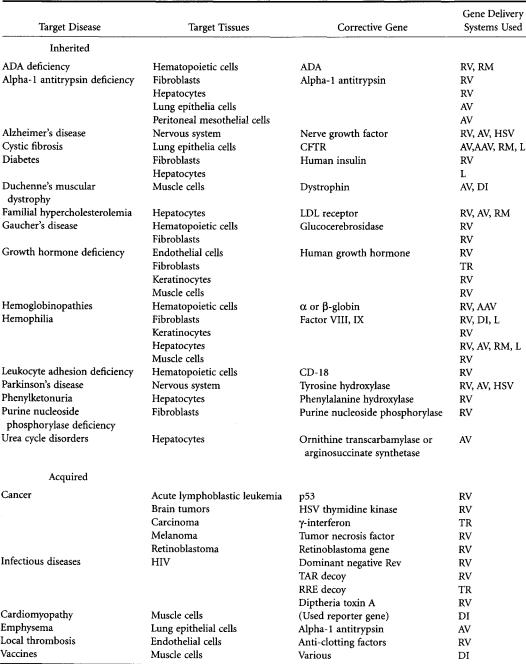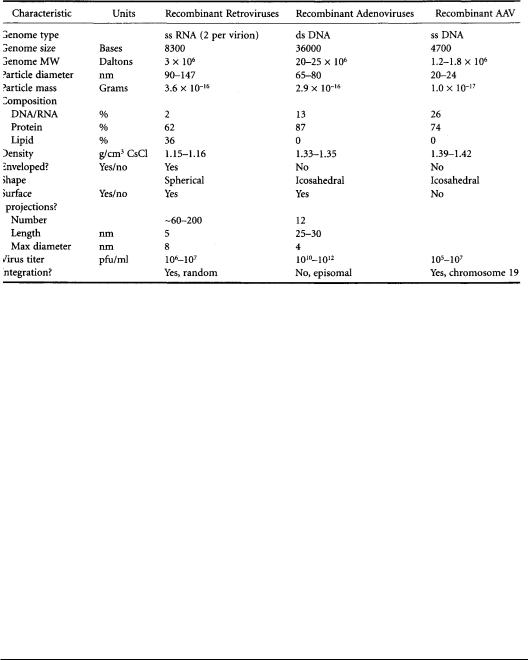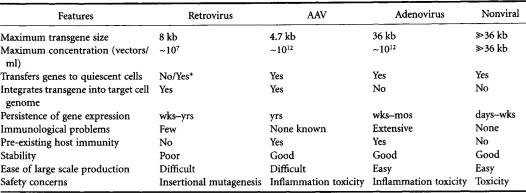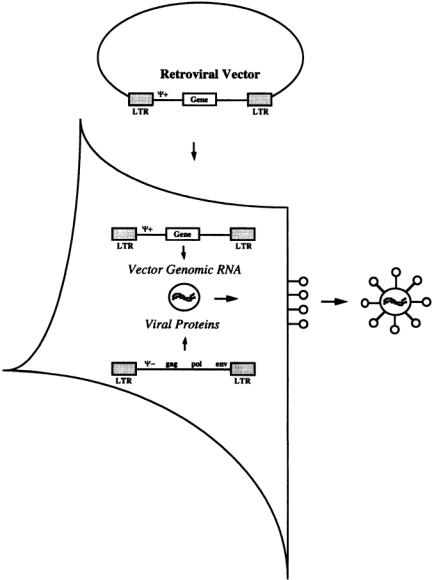
Biotechnology for Biomedical Engineers - Martin L. Yarmush et al
.pdf12-12 |
Biotechnology for Biomedical Engineers |
cells do not require surface attachment and are grown much like bacteria.However, they also lack a cell wall and are larger and hence more fragile than vertebrate cells.
Passive antibody vaccines have been prepared up to now from human blood serum. Consequently, there has been no need for cultivation methods beyond vaccination and conventional harvest of antibodycontaining blood from donors. Due to safety concerns over using human blood, passive vaccines will likely be monoclonal antibodies or cocktails thereof prepared in vitro by the cultivation of hybridoma or myeloma cell lines.This approach is under investigation for anti-HIV-1 antibodies [Emini et al, 1992]. Cultivation of these cell lines involves the same principles of animal cell cultivation as described above,with the exception that hybridomas can be less fastidious in nutritional requirements, and they do not require surface attachment for growth.These features will allow for defined serumfree media and simpler cultivation vessels and procedures.
For the gene-therapy approach, the patient actually produces the antigen. A DNA polynucleotide encoding protein antigen(s) is injected intramuscularly into the patient.The muscle absorbs the DNA and produces the antigen, thereby eliciting an immune response [Ulmer et al., 1993]. For cultivation, production of the DNA plasmid is the objective, which can be done efficiently by bacteria such as Escherichia coli. Such vaccines are not sufficiently far along in development to generalize the factors that influence their production; however, it is expected that producer cells and process conditions that favor high cell mass, DNA replication, and DNA stability will be important.A potential beauty of this vaccination approach is that for cultivation,purification,and formulation,many vaccines can conceivably be made by identical processes, since the plasmids are inactive within the bacterium and possess roughly the same nucleotide composition.
Downstream Processing
Future vaccines will be more highly purified in order to minimize side effects,and future improvements will be to assist this goal. The use of chemically defined culture media will impact favorably on downstream processing by providing a cleaner feedstock. Advances in filtration membranes and in chromatographic support binding capacity and throughput will improve ease of purification.Affinity purification methods that rely on specific “lock-and-key” interactions between a chromatographic support and the antigen will see greater use as well.Techniques amenable to larger scales will be more important to meet increased market demands and to reduce manufacturing costs. HPLC and other analytical techniques will provide greater process monitoring and control throughout purification.
As seen during the evolution of diphtheria and tetanus toxoid vaccines, the trend will be to purify toxins prior to inactivation to reduce their cross-linking with other impurities.New inactivating agents such as hydrogen peroxide and ethyl dimethylaminopropyl carbodiimide have been investigated for pertussis toxin, which do not have problems of cross-linking or reversion of the toxoid to toxin status.
Molecular biology is likely to have an even greater impact on purification. Molecular cloning of proteins allows the addition of amino acid sequences that can facilitate purification, e.g., polyhistidine or polyalanine tails for metal ion, or ion-exchange chromatography. Recent efforts also have employed genetic manipulation to inactivate toxins, eliminating the need for the chemical treatment step.
Vaccine Adjuvants and Formulation
Many new subunit antigens lack the inherent immunogenicity found in the natural organism, thereby creating the need for better adjuvants. Concomitantly, the practical problem of enhancing worldwide immunization coverage has stimulated development of single-shot vaccine formulations in which booster doses are unnecessary.Thus future vaccine delivery systems will aim at reducing the number of doses via controlled antigen release and will increase vaccine efficacy by improving the mechanism of antigen presentation (i.e., controlled release of antigen over time or directing of antigen to specific antigenpresenting cells). Major efforts are also being made to combine antigens into single-shot vaccines to improve immunization rates for infants, who currently receive up to 15 injections during the first 2 years of life. Coadministration of antigens presents unique challenges to formulation as well.

Vaccine Production |
12-13 |
Recent advances in the understanding of in vivo antigen presentation to the immune system has generated considerable interest in developing novel vaccine adjuvants.The efficacy of an adjuvant is judged by its ability to stimulate specific antibody production and killer cell proliferation.Developments in biology now allow analysis of activity by the particular immune cells that are responsible for these processes. Examples of adjuvants currently under development include saponin detergents, muramyl dipeptides, and lipopolysaccharides (endotoxin), including lipid A derivatives.As well, cytokine growth factors that stimulate immune cells directly are under investigation.
Emulsion and liposome delivery vehicles are also being examined to enhance the presentation of antigen and adjuvant to the immune system [Edelman, 1992; Allison and Byars, 1992]. Controlledrelease delivery systems are also being developed that encapsulate antigen inside a polymer-based solid microsphere. The size of the particles typically varies between 1 and 300 µm depending on the manufacturing process. Microspheres are prepared by first dissolving the biodegradable polymer in an organic solvent. The adjuvanted antigen, in aqueous solution or lyophilized powder form, is then emulsified into the solvent-polymer continuous phase.Microspheres are then formed by either solvent evaporation, phaseseparation, or spray-drying, resulting in entrapment of antigen [Morris et al., 1994]. The most frequently employed biodegradable controlled-released delivery systems use FDA-approved poly(lactide-co-glycolide) copolymers (PLGA),which hydrolyze in vivo to nontoxic lactic and glycolic acid monomers. Degradation rate can be optimized by varying the microsphere size and the monomer ratio.Antigen stability during encapsulation and during in vivo release from the microspheres remains a challenge.Other challenges to manufacturing include encapsulation process reproducibility,minimizing antigen exposure to denaturing organic solvents, and ensuring sterility. Methods are being developed to address these issues, including the addition of stabilizers for processing purposes only. It should be noted that microsphere technology may permit vaccines to be targeted to specific cells; they can potentially be delivered orally or nasally to produce a mucosal immune response.
Other potential delivery technologies include liposomes and alginate polysaccharide and poly(dicarboxylatophenoxy)phosphazene polymers. The latter two form aqueous hydrogels in the presence of divalent cations [Khan et al., 1994]. Antigens can thus be entrapped under aqueous conditions with minimal processing by simply mixing antigen and soluble aqueous polymer and dripping the mixture into a solution of CaCl2. The particles erode by Ca2+ loss, mechanical and chemical degradation,and macrophage attack.For alginate polymers,monomer composition also determines the polymer’s immunogenicity, and thus the material can serve as both adjuvant and release vehicle.
For combination vaccines, storage and administration compatibility of the different antigens must be demonstrated. Live-organism vaccines are probably not compatible with purified antigens, since the former usually require lyophilization and the latter are liquid formulas. Within a class of vaccines, formulation is challenging.Whereas it is relatively straightforward to adjuvant and formulate a single antigen, combining antigens is more difficult because each has its own unique alum species, pH, buffer ion, and preservative optimum. Nevertheless, several combination vaccines have reached the market, and others are undergoing clinical trials.
12.5 Conclusions
Although vaccinology and manufacturing methods have come a considerable distance over the past 40 years,much more development will occur.There will be challenges for biotechnologists to arrive at safer, more effective vaccines for an ever-increasing number of antigen targets. If government interference and legal liability questions do not hamper innovation,vaccines will remain one of the most cost-effective and logical biomedical technologies of the next century, as disease is prevented rather than treated.
Challenges are also posed in bringing existing vaccines to technologically undeveloped nations, where they are needed most. This problem is almost exclusively dominated by the cost of vaccine manufacture and the reliability of distribution.Hence it is fertile ground for engineering improvements in vaccine production.
12-14 Biotechnology for Biomedical Engineers
Defining Terms
Adjuvant: A chemical or biologic substance that enhances immune response against an antigen. Used here as a verb, the action of combining an antigen and an adjuvant.
Antigen: A macromolecule or assembly of macromolecules from a pathogenic organism that the immune system recognizes as foreign.
Attenuation: The process of mutating an organism so that it no longer causes disease. Immunogen: A molecule or assembly of molecules with the ability to invoke an immune system
response.
Pathogen: A disease-causing organism,either a virus,mycobacterium,or bacterium.
References
Aboud RA,Aunins JG,Buckland BC,et al.1994.HepatitisAVirusVaccine.International patent application, publication numberWO 94/03589, Feb.17,1994.
Allison AC,Byars NE.1992.Immunologic adjuvants and their mode of action.In RW Ellis (ed),Vaccines: New Approaches to Immunological Problems, p 431.Reading,Mass.,Butterworth-Heinemann.
Atkinson B,Mavituna F.1991.Biochemical Engineering and Biotechnology Handbook, 2d ed.London,Macmillan. Aunins JG,Henzler H-J.1993.Aeration in cell culture bioreactors.In H-J Rehm et al.(eds),Biotechnology,
2d ed., vol 3, p 219.Weinheim, Germany,VCHVerlag.
Bachmayer H.1976.Split and subunit vaccines.In P.Selby (ed),InfluenzaVirus,Vaccines,and Strategy,p 149. NewYork,Academic Press.
Barbet AF. 1989.Vaccines for parasitic infections. AdvVet Sci Comp Med 33:345.
Cryz SJ, Reinhard G. 1990. Large-scale production of attenuated bacterial and viral vaccines. In GC Woodrow, MM Levine (eds), New GenerationVaccines, p 921. NewYork, Marcel Dekker.
Datar RV,Rosen C-G.1993.Cell and cell debris removal:Centrifugation and crossflow filtration.In H- J Rehm et al. (eds), Biotechnology, 2d ed., vol 3, p 469.Weinheim, Germany,VCHVerlag.
Dobrota M,Hinton R.1992.Conditions for density gradient separations.In D Rickwood (ed),Preparative Centrifugation:A Practical Approach, p 77. NewYork, Oxford U Press.
Eagle H, Habel K. 1956.The nutritional requirements for the propagation of poliomyelitis virus by the HeLa cell. J Exp Med 104:271.
Edelman R. 1992.An update on vaccine adjuvants in clinical trial. AIDS Res Hum Retrovir 8(8):1409. Ellis RW. 1992.Vaccine development: Progression from target antigen to product. In JE Ciardi et al.
(eds), Genetically EngineeredVaccines, p 263. NewYork, Plenum Press.
Emini EA, Schleif WA, Nunberg JH, et al. 1992. Prevention of HIV-1 infection in chimpanzees by gp120V3 domain-specific monoclonal antibodies.Nature 355:728.
Greiff D, Rightsel WA. 1968. Stability of suspensions of influenza virus dried to different contents of residual moisture by sublimation in vacuo.Appl Microbiol 16(6):835.
HanischW.1986.Cell harvesting.InWC McGregor (ed),Membrane Separations in Biotechnology, p66. New York, Marcel Dekker.
Hewlett EL, Cherry JD. 1990. New and improved vaccines against pertussis. In GC Woodrow, MM Levine (eds), New GenerationVaccines, p 231. NewYork, Marcel Dekker.
Hilleman MR.1989.Improving the heat stability of vaccines:Problems,needs and approaches.Rev Infect Dis 11(suppl 3):S613.
Hilleman MR.1993.Plasma-derived hepatitus B vaccine:A breakthrough in preventive medicine.In R Ellis (ed), Hepatitus B Vaccines in Clinical Practice, p 17. NewYork, Marcel Dekker.
Howard AJ. 1992. Haemophilus influenzae type-b vaccines. Br J Hosp Med 48(1):44.
Ingraham JL, Maaløe O, Neidhardt FC.1983.Growth of the Bacterial Cell. Sunderland, Mass,Sinauer. Jagicza A, Balla P, Lendvai N, et al. 1986. Additional information for the continuous cultivation of
Bordetella pertussis for the vaccine production in bioreactor. Ann Immunol Hung 26:89.
Vaccine Production |
12-15 |
Janson J-C, Ryden L (eds). 1989. Protein Purification Principles, High Resolution Methods, and Applications.
Weinheim,Germany,VCHVerlag.
Kelley BD, HattonTA. 1993. Protein purification by liquid-liquid extraction. In H-J Rehm et al. (eds), Biotechnology, 2d ed,vol 3,p 594.Weinheim,Germany,VCHVerlag.
Khan MZI, Opdebeeck JP,Tucker IG. 1994. Immunopotentiation and delivery systems for antigens for single-step immunization: Recent trends and progress. Pharmacol Res 11(1):2.
Melnick JL.1984. Live attenuated oral poliovirus vaccine.Rev Infect Dis 6(suppl 2):S323. Metzgar DP,Newhart RH.1977.U.S.patent no.4,057,626,Nov.78,1977.
Montagnon B,Vincent-Falquet JC, Fanget B. 1984.Thousand litre scale microcarrier culture of vero cells for killed polio virus vaccine: Promising results. Dev Biol Stand 55:37.
Morris W, Steinhoff MC, Russell PK. 1994. Potential of polymer microencapsulation technology for vaccine innovation.Vaccine 12(1):5.
Pappenheimer AM. 1984. Diphtheria. In R Germanier (ed), Bacterial Vaccines, p1. NewYork,Academic Press.
Polson A.1993. Virus Separation and Preparation. NewYork,Marcel Dekker.
Prokop A, Rosenberg MZ.1989. Bioreactor for mammalian cell culture. In A Fiechter (ed), Advances in Biochemical Engineering,vol 39:Vertebrate Cell Culture II and EnzymeTechnology, p 29.Berlin,SpringerVerlag.
Rappuoli R. 1990. New and improved vaccines against diphtheria and tetanus. In GC Woodrow, MM Levine (eds), New GenerationVaccines, p 251. NewYork, Marcel Dekker.
Relyveld EH.1980.Current developments in production and testing of tetanus and diphtheria vaccines. In A Mizrahi et al. (eds), Progress in Clinical and Biological Research, vol 47: New Developments with Human andVeterinaryVaccines, p51. NewYork,Alan R Liss.
Relyveld EH, Ben-Efraim S. 1983. Preparation of vaccines by the action of glutaraldehyde on toxins, bacteria,viruses,allergens and cells.In SP Colowic,NO Kaplan (eds),Methods in Enzymology, vol 93, p 24. NewYork,Academic Press.
Reuveny S. 1990. Microcarrier culture systems. In AS Lubiniecki (ed), In Large-Scale Mammalian Cell CultureTechnology, p 271. NewYork, Marcel Dekker.
Sato Y, Kimura M, Fukumi H. 1984. Development of a pertussis component vaccine in Japan. Lancet 1(8369):122.
Seeber SJ,White JL, Helm SL. 1991. Predicting the adsorption of proteins by aluminum-containing adjuvants.Vaccine 9:201.
Shirodkar S,Hutchinson RL,Perry DL,et al.1990.Aluminum compounds used as adjuvants in vaccines.
Pharmacol Res 7(12):1282.
Sitrin RD, Wampler DE, Ellis R. 1993. Survey of licensed hepatitis B vaccines and their product processes. In R Ellis (ed), Hepatitus B Vaccines in Clinical Practice, p 83. NewYork, Marcel Dekker.
Sureau P. 1987. Rabies vaccine production in animal cell cultures. In A Fiechter (ed), Advances in Biochemical Engineering and Biotechnology, vol 34,p 111.Berlin,Springer-Verlag.
Tyrrell DAJ. 1976. Inactivated whole virus vaccine. In P Selby (ed), Influenza,Virus,Vaccines and Strategy, p 137. NewYork,Academic Press.
Ulmer JB, Donnelly JJ, Parker SE, et al. 1993.Heterologous protection against influenza by injection of DNA encoding a viral protein. Science 259(5102):1745.
Volkin DB,KlibanovAM.1989.Minimizing protein inactivation.InTE Creighton (ed),Protein Function: A Practical Approach, pp 1–12. Oxford, IRL Press.
Further Information
A detailed description of all the aspects of traditional bacterial vaccine manufacture may be found in the World Health Organization technical report series for the production of whole-cell pertussis, diphtheria, and tetanus toxoid vaccines:
12-16 |
Biotechnology for Biomedical Engineers |
World Health Organization.1997a.BLG/UNDP/77.1 Rev.1.Manual for the Production and Control ofVaccines: DiphtheriaToxoid.
World Health Organization.1997b.BLG/UNDP/77.2 Rev.1.Manual for the Production and Control ofVaccines: Tetanus Toxoid.
World Health Organization.1997c.BLG/UNDP/77.3 Rev.1.Manual for the Production and Control ofVaccines: PertussisVaccine.
A description of all the aspects of cell culture and viral vaccine manufacture may be found in Spier RE, Griffiths JB. 1985. Animal Cell Biotechnology, vols 1 to 3. London,Academic Press.
For a review of virology and virus characteristics, the reader is referred to Fields BN, Knipe DM (eds). 1990. Virology, 2d ed, vols 1 and 2. NewYork, Raven Press.

Joseph M. Le Doux
The Center for Engineering in Medicine, and Surgical Services, Massachusetts General Hospital, Harvard Medical School, and the Shriners Burns Hospital
Jeffrey R. Morgan
The Center for Engineering in Medicine, and Surgical Seivices, Massachusetts General Hospital, Harvard Medical School, and the Shriners Burns Hospital
Martin L.Yarmush
Massachusetts General Hospital,
Harvard Medical School, and the
Shriners Burns Hospital
13
Gene Therapy
13.1 |
Background |
13–1 |
13.2 |
Recombinant Retroviruses |
13–3 |
13.3 |
Recombinant Adenoviruses |
13–6 |
13.4 |
Recombinant Adeno-AssociatedViruses |
13–9 |
13.5 |
Direct Injection of Naked DNA |
13–11 |
13.6 |
Particle-Mediated Gene Transfer |
13–12 |
13.7 |
Liposome-Mediated Gene Delivery |
13–12 |
13.8 |
Other Gene Transfer Methods |
13–13 |
13.9 |
Summary and Conclusion |
13–13 |
Gene therapy, the transfer of genes into cells for a therapeutic effect, is a new approach to the treatment of disease.The first clinically applicable system for efficiently delivering genes into mammalian cells was developed in the early 1980s and was based on a genetically engineered retrovirus, which, as part of its lifecycle, stably integrates its genome into the target cell’s chromosomal DNA. Using recombinant DNA technology perfected in the mid-1970s,investigators replaced the viral genes with therapeutic genes and the resulting recombinant retrovirus shuttled these genes into the target cells. The potential applications of gene therapy are far reaching (Table 13.1) since there are over 4000 known human genetic diseases (many of which have no viable treatment) and virtually every human disease is profoundly influenced by genetic factors [Anderson, 1992]. In one of the first clinical applications, gene therapy was used to treat patients with ADA (adenosine deaminase) deficiency, a genetic defect which causes severe combined immune deficiency (SCID) and death at an early age [Anderson,1992].The patient’s lymphocytes were isolated and transduced (insertion of a foreign gene into the genome of a cell) by a recombinant retrovirus encoding a functional ADA gene. These transduced cells were expanded in culture then reinfused back to the patient. These protocols were conducted after an exhaustive peer review process that laid the groundwork for future gene therapy protocols. Successful treatment of other genetic diseases is likely to be achieved in the future [Levine and Friedmann, 1993; Roemer and Friedmann, 1992]. In addition to inherited diseases, other viable targets for gene therapy include more prevalent disorders that show a complex genetic dependence (i.e., cancer and heart disease) as well as infectious diseases (i.e., human immunodeficiency virus (HIV) and applications in tissue engineering [Anderson, 1992; Morgan andYarmush, 1998].
13.1 Background
Gene therapy protocols conduct gene transfer in one of two settings; either ex vivo or in vivo [Mulligan, 1993]. For ex vivo gene therapy, target cells or tissue are removed from the patient, grown in culture, genetically modified and then reinfused or retransplanted into the patient [Ledley, 1993]. Ex vivo gene therapy is limited to those tissues which can be removed, cultured in vitro and returned to the patient and cannot be applied to many important target tissues and organs such as the lungs, brain and heart. For in vivo gene therapy, the gene transfer agent is delivered directly to the target tissue/
0-8493-1811-4/03/$0.00+$1.50 |
13-1 |
© 2003 by CRC Press LLC |

13-2 |
Biotechnology for Biomedical Engineers |
TABLE 13.1 Target Diseases for Gene Therapy
Note.AAV=recombinant adeno-associated viruses
AV=recombinant adenoviruses
DI=direct injection
HSV=recombinant herpes simplex virus
L=lipofection
RM=receptor mediated
RV=recombinant retroviruses
TR=transfection

GeneTherapy |
13-3 |
TABLE 13.2 Physical Characteristics of Recombinant Virions
organ, and gene transfer occurs in the patient rather than in the tissue culture dish [Mulligan, 1993]. Both strategies have inherent advantages and disadvantages and current research is evaluating which approach can best meet the needs of a particular disease.
Gene delivery systems can be classified as either viral or nonviral [Friedmann, 1989]. For viral gene transfer, one of several different types of viruses is engineered to deliver genes.Typically, viral genes are removed to prevent self-replication of the virus and to provide room for the insertion of one or more therapeutic genes that the recombinant virus will carry.To further ensure the safety of the recombinant viruses, specialized packaging cell lines have been developed to produce the recombinant viruses and minimize the production of infectious wild-type viruses. Some viruses are able to integrate the therapeutic genes into the target cell’s nuclear DNA (retroviruses,adeno-associated viruses),whereas others are not (adenoviruses) (Table 13.2).
Non-viral gene transfer systems are based on a variety of technologies that employ physical/chemical means to deliver genes [Felgner and Rhodes,1991].These technologies include direct plasmid injection, bombardment with DNA coated microprojectiles,and DNA complexed with liposomes.Some nonviral transfection techniques are too inefficient (e.g., coprecipitation of DNA with calcium phosphate [Chen and Okayama,1987],DNA complexed with DEAE-dextran [Pagano et al.,1967],electroporation [Neumann et al., 1982]) or laborious (e.g., microinjection of DNA [Capecchi, 1980]) for clinical use. Only those gene delivery systems (viral and nonviral) with potential for clinical application will be discussed in this chapter.The main features of these technologies (Table 13.3) will be described and specific examples of their applications highlighted.
13.2 Recombinant Retroviruses
Many of the approved clinical trials have utilized recombinant retroviruses for gene delivery.Retroviral particles contain two copies of identical RNA genomes that are wrapped in a protein coat and further encapsidated by a lipid bilayer membrane. The virus attaches to specific cell surface receptors via surface proteins that protrude from the viral membrane. The particle is then internalized and its genome is released into the cytoplasm, reverse transcribed from RNA to DNA, transported into the nucleus and then integrated into the cell’s chromosomal DNA.The integrated viral genome has LTRs (long terminal repeats) at both ends, which encode the regulatory sequences that drive the expression of the viral genome [Weiss et al., 1982].

13-4 |
Biotechnology for Biomedical Engineers |
TABLE 13.3 Features of theVarious Gene Transfer Systems
* Recombinant lentiviruses, such as human immunodeficiency virus, are capable of transducing quiescent cells.
Retroviruses used for gene transfer are derived from wild-type murine retroviruses.The recombinant viral particles are structurally identical to the wild type virus but carry a genetically engineered genome (retroviral vector),which encodes the therapeutic gene of interest.These recombinant viruses are incapable of self-replication but can infect and insert their genomes into a target cell’s genome [Morgan et al,1993].
Recombinant retroviruses, like all other recombinant viruses, are produced by a two-part system composed of a packaging cell line and a recombinant vector (Fig. 13.1) [Anderson, 1992; Levine and Friedmann, 1993].The packaging cell line has been engineered to express all the structural viral genes (gag, Pol and env) necessary for the formation of an infectious virus particle. gag encodes the capsid proteins and is necessary for encapsidation of the vector. pol encodes the enzymatic activities of the virus including reverse transcriptase and integrase.env encodes the surface proteins on the virus particle that are necessary for attachment to the target cell’s receptors.
The retroviral vector is essentially the wild-type genome with all the viral genes removed. This vector encodes the transgene(s) and the regulatory sequences necessary for their expression as well as a special packaging sequence, (;), which is required for encapsidation of the genome into an infectious viral particle [Morgan et al., 1993].To produce recombinant retrovirus particles, the retroviral vector is transfected into the packaging cell line.The structural proteins expressed by the packaging cell line recognize the packaging sequence on RNAs transcribed from the transfected vector and encapsidate them into an infectious virus particle that is subsequently exocytosed by the cell and released into the culture medium. This medium containing infectious recombinant viruses is harvested and used to transduce target cells.
Many different retroviral vector designs have been used (Fig.13.2).A commonly used vector encodes two genes, one expressed from the LTR and the other from an internal promoter (Fig. 13.2c) [Miller, 1992]. Often, one gene expresses a therapeutic protein and the other a selectable marker that makes the modified cells resistant to selective media or a drug.This allows the investigator to establish a culture composed solely of transduced cells by growing them under the selective conditions.Several configurations are possible, but the optimum design is often dictated by the transgene(s) being expressed and the cell type to be transduced.Vector configuration is crucial for maximizing viral titer and transgene expression [Roemer and Friedmann,1992].
As with all gene transfer technologies, there are advantages and disadvantages to the use of recombinant retroviruses. Retroviruses can only transduce dividing cells since integration requires passage of the target cells through mitosis [Roe et al.,1993].This limits the use of recombinant retroviruses for in vivo gene therapy, since few normal cells are actively dividing. Recently, however, new retroviral vectors based on lentiviruses have been developed that are capable of transducing nondividing cells [Naldini et al, 1996]. These HIV based vectors were able to achieve stable gene transfer after injection into a nondividing tissue (brain) in vivo.

GeneTherapy |
13-5 |
FIGURE 13.1 Packaging cell line for retrovirus.A simple retroviral vector composed of 2 LTR regions that flank sequences encoding the packaging sequence (;) and a therapeutic gene.A packaging cell line is transfected with this vector.The packaging cell line expresses the three structural proteins necessary for formation of a virus particle (gag, poly and env). These proteins recognize the packaging sequence on the vector and form an infectious virion around it. Infectious virions bud from the cell surface into the culture medium.The virus-laden culture medium is filtered to remove cell debris and then either immediately used to transduce target cells or the virions are purified and/or concentrated and frozen for later use.
Other drawbacks of retroviral vectors include: (a) a limitation to the size of inserted genes (<8 kilobases) [Roemer and Friedmann, 1992]; (b) the particles are unstable and lose activity at 37°C with a half-life of 5–7 hours [Kotani et al., 1994; Le Doux et al., 1999]; and (c) virus producer cell lines typically produce retrovirus in relatively low titers (105 to 107 infectious particles per ml) [Paul et al., 1993]. The viral titer is a function of several factors including the producer cell line, the type of transgene and the vector construction.Moreover,purification and concentration of retroviruses without
